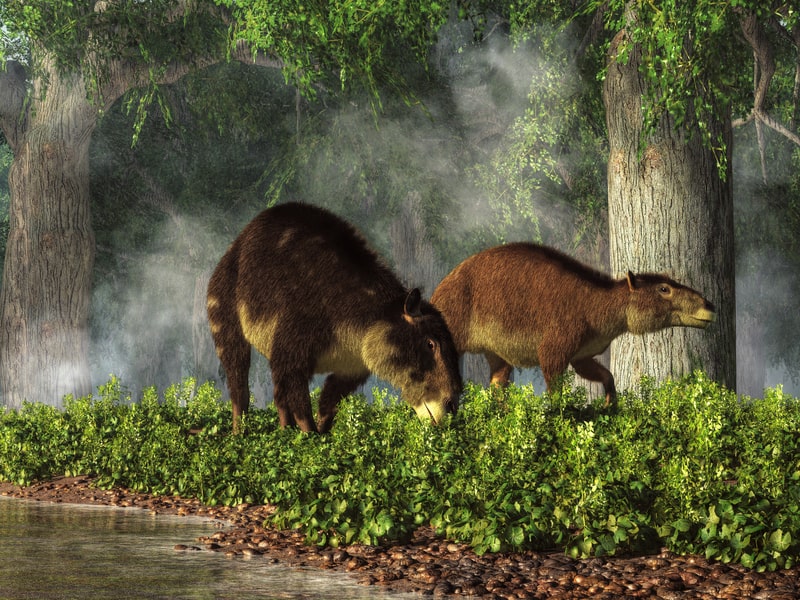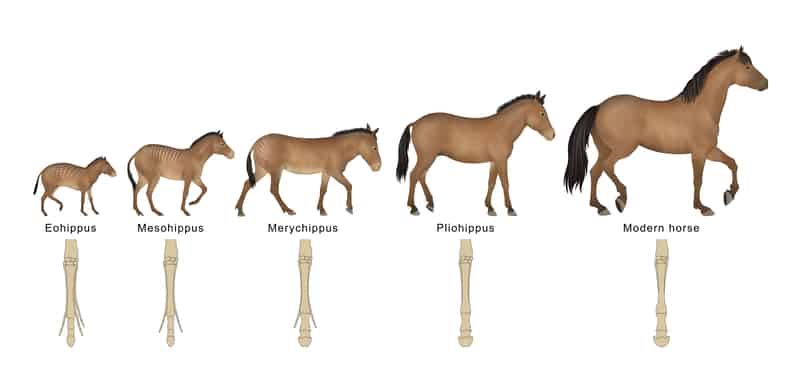Eohippus or Dawn Horse First Appears!
The history of the horse’s evolution dates back to the Eocene Epoch period which dates from about 56 million years ago to 33.9 million years ago. The horse’s family also known collectively as Equidae, made its first appearance as a tiny browsing animal that stood between 4.2 and 5 Hands high. Eohippus, or Dawn Horse, as it is known appeared around 52 million years ago. Fossils of the animal were found in both North America and Europe.

This tiny creature looked more like a dog than a modern horse, and in fact had 5 toes on the forelimb with 4 touching the ground which were like small hooves with the 5th “toe thumb off the ground”. The hind legs had 3 of these small hooves on each limb, while the 1st and 5th toes did not touch the ground. Eohippus had quite a roach look to its back and the hindquarters were higher than the forehand. The bones of the lower limbs were unfused allowing it great flexibility for movement and turning in forests or wooded areas.
Eohippus Lived in Wooded Areas
Eohippus had a very short head and neck, resembling more a deer than the modern horse; this is because it was genetically designed to survive in the woods browsing, eating, fruit, berries, leaves and shoots. This small ancestor of the modern horse survived with little change in its evolution for approximately 20million years!
A Changing Habitat and Evolution
A changing habitat played a major role in the modern horse’s evolution. The forests were replaced with larger areas of open grassy plains, and the animal had to adapt to survive. The horse did this by developing longer legs with a single hoof on each limb and a big powerful body to propel the limbs, giving it great speed. It also developed a long head and neck for grazing the plains, with almost 360 degree vision, to spot predators. Its dentition also changed to allow it the ability to grind the tough grasses, while its digestive system adapted to allow for a more efficient hind gut digestion, allowing the horse to utilize as much energy as he could from his diet.
When you look at the picture showing some of the steps in the horse’s evolution, it is quite amazing to think that even something as big as one of our Irish Draught Horses had an ancestor as small as a Dog.

This Article first appeared in the March 2021 Issue of Irish Sport Horse Magazine, all pictures are subject to Copyright.
